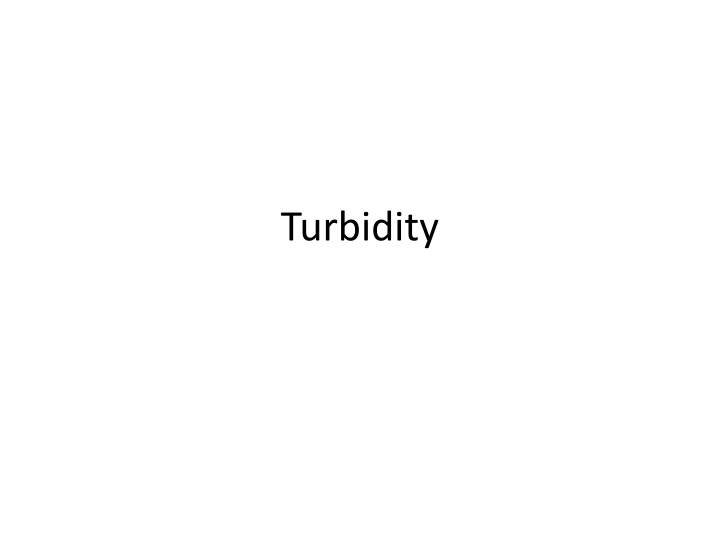
Turbidity in Water: Causes and Measurements
Explore the concept of turbidity in water, caused by suspended particles affecting water clarity. Learn about its measurement using light scattering, factors influencing turbidity, regulatory standards, and its implications in lakes, rivers, and water treatment facilities.
Download Presentation

Please find below an Image/Link to download the presentation.
The content on the website is provided AS IS for your information and personal use only. It may not be sold, licensed, or shared on other websites without obtaining consent from the author. If you encounter any issues during the download, it is possible that the publisher has removed the file from their server.
You are allowed to download the files provided on this website for personal or commercial use, subject to the condition that they are used lawfully. All files are the property of their respective owners.
The content on the website is provided AS IS for your information and personal use only. It may not be sold, licensed, or shared on other websites without obtaining consent from the author.
E N D
Presentation Transcript
Turbidity in water is caused by the presence of suspended particles that reduce the clarity of the water. Turbidity is defined as an expression of the optical property that causes light to be scattered and absorbed rather than transmitted . Turbidity measurements require a light source and a sensor to measure the scattered light. This sensor is located at 90 to the light source. The measured turbidity increases as the intensity of the scattered light increases.
It is important to note that the scattering of light caused by suspended particles will vary with the size, shape, and composition of the particles. Also, as the number of particles increases beyond a given level, multiple scattering occurs, and the absorption of incident light is increased, causing the measured turbidity to decrease. Turbidity is expressed in nephelometric turbidity units (NTU). The regulatory standard for turbidity in finished water is 0.3 NTU, and many water treatment facilities have a treatment goal of <0.1 NTU, which is near the detection limit for turbidity meters.
In lakes or reservoirs, turbidity is frequently stable over time and ranges from about 1 to 20 NTU, excluding storm events. Turbidity in rivers is more variable due to storm events, runoff, and changes in flow rate in the river. Turbidity in rivers can range from under 10 to over 4000 NTU. Streams and rivers where the turbidity can change by several hundred NTU in a matter of hours must be monitored for its turbidity for successful process control.



















